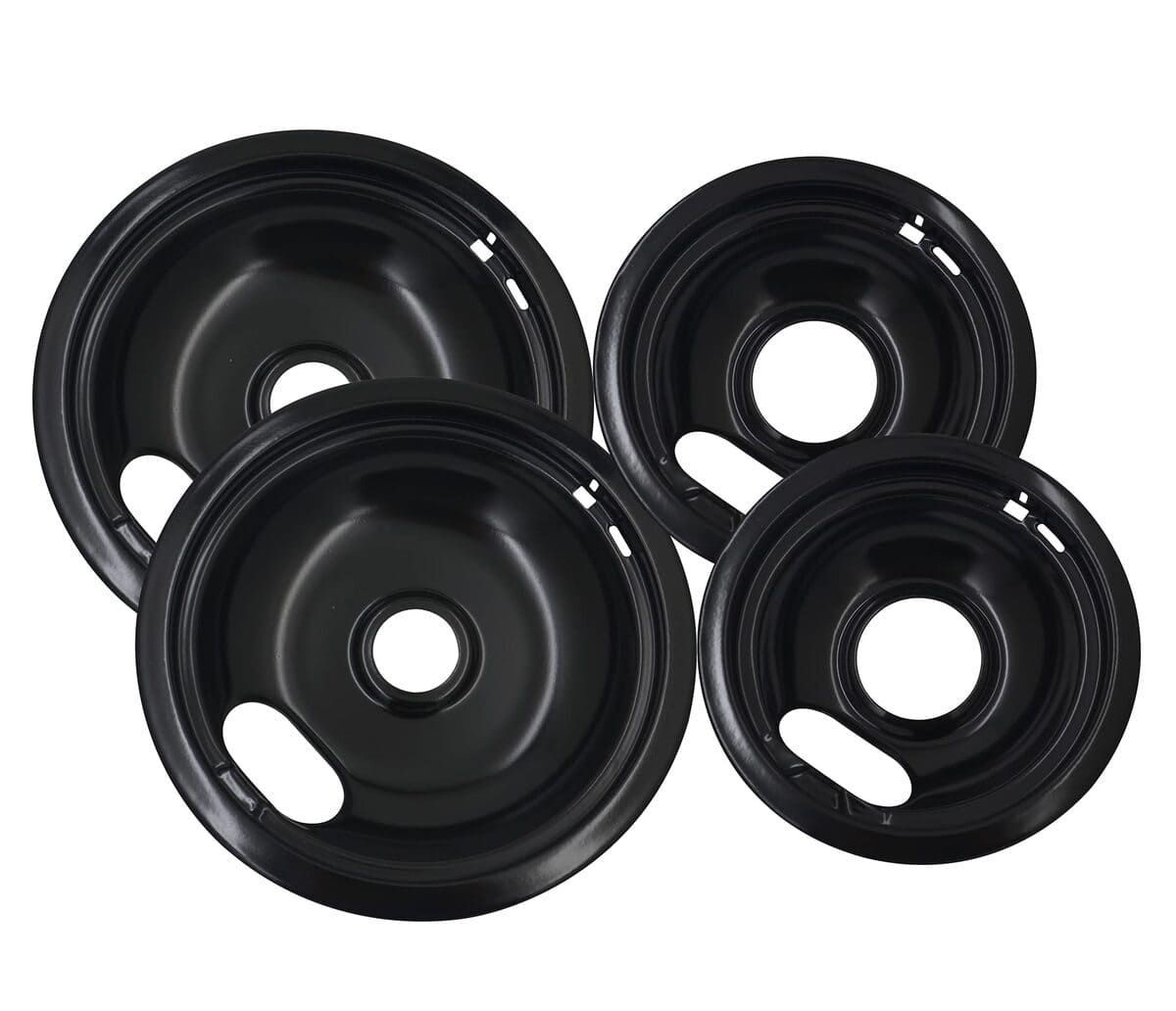Porcelain Drip Pans Vs Chrome – Comparison, Durability & Safety Explained is a topic that is of interest to many homeowners who are looking to replace their stove drip pans. While both porcelain and chrome drip pans have their advantages and disadvantages, it’s important to understand the differences between the two before making a purchase.
Porcelain drip pans are known for their durability and long-lasting appearance. They are made from a type of ceramic that is fired at high temperatures, which makes them resistant to chipping, cracking, and fading. In addition, porcelain drip pans have a smooth surface that is easy to clean and maintain. However, they can be more expensive than chrome drip pans and may not be available in as many sizes and styles.
On the other hand, chrome drip pans are generally less expensive than porcelain drip pans and are widely available in a variety of sizes and styles. They are made from a type of metal that is coated with a layer of chrome, which gives them a shiny, reflective surface. However, chrome drip pans can be prone to rust and corrosion over time, which can compromise their safety and durability. It’s important to keep them clean and dry to avoid these issues.
Durability
When it comes to durability, both porcelain and chrome drip pans have their pros and cons.
Porcelain Drip Pans
Porcelain drip pans are known for their durability and long-lasting performance. They are made of a hard, heat-resistant material that can withstand high temperatures and heavy usage. Porcelain is also resistant to scratches, stains, and other types of damage, which means that it can last for years without needing to be replaced.
However, porcelain is not indestructible. If dropped or hit with a heavy object, it can chip or crack, which can compromise its durability and effectiveness. In addition, if the porcelain is not properly cared for, it can become stained or discolored over time.
Chrome Drip Pans
Chrome drip pans are generally less durable than porcelain drip pans. They are made of a thin metal material that can dent, warp, or corrode over time. Chrome is also more susceptible to scratches and other types of damage, which can make it less effective at catching spills and drips.
However, chrome drip pans are typically less expensive than porcelain drip pans, which makes them a more affordable option for those on a budget. They are also easier to clean and maintain than porcelain, which can make them a more convenient option for those who don’t want to spend a lot of time cleaning their drip pans.
Safety
When it comes to drip pans, safety is an important consideration. Both porcelain and chrome drip pans have their own unique safety features.
Porcelain Drip Pans
Porcelain drip pans are generally considered safe to use. They are non-reactive, meaning that they won’t react with the foods or liquids that come into contact with them. This is important because some materials can react with acidic foods and create harmful compounds.
Porcelain is also a good insulator, which means that it won’t get as hot as other materials. This can help prevent burns and other injuries.
Chrome Drip Pans
Chrome drip pans are also considered safe to use. However, there are some potential safety concerns to be aware of.
Chrome is a metal, and as such, it can react with acidic foods. This can create harmful compounds that can be dangerous if ingested. For this reason, it’s important to be careful when using chrome drip pans with acidic foods.
Chrome can also get very hot, which can increase the risk of burns and other injuries. It’s important to use caution when handling chrome drip pans, especially when they are hot.
Comparison
When it comes to choosing between porcelain drip pans and chrome drip pans, there are several factors to consider. Here are some key aspects to compare:
Price
Porcelain drip pans are generally more expensive than chrome drip pans. However, the price difference may not be significant enough to sway a buyer’s decision, especially considering the added durability and aesthetic appeal of porcelain.
Cleaning Ease
Porcelain drip pans are easier to clean than chrome drip pans. Porcelain is a non-porous material that resists stains and odors, making it easy to wipe clean with a damp cloth or sponge. Chrome, on the other hand, can be more difficult to clean, as it can tarnish and rust over time.
Heat Distribution
Porcelain drip pans distribute heat more evenly than chrome drip pans. Porcelain is a better conductor of heat, which means that it will absorb and distribute heat more efficiently than chrome. This can result in more consistent cooking and better results.
Aesthetics
Porcelain drip pans are more aesthetically pleasing than chrome drip pans. Porcelain has a smooth, glossy finish that looks great and is available in a variety of colors to match any kitchen decor. Chrome, while shiny, can appear dull and lackluster over time.
Conclusion
In conclusion, choosing between porcelain drip pans and chrome drip pans ultimately comes down to personal preference and needs. While chrome may have a shinier appearance initially, it is not as durable in the long run and may need to be replaced more frequently. Porcelain, on the other hand, is more durable and can withstand high temperatures, making it a great choice for those who frequently cook at high heat.
When considering drip pans, it is important to pay attention to the quality, construction, and materials used. Additionally, the size and shape of the pan should be considered to ensure it fits properly on the stove. It is also helpful to read reviews from others who have purchased and used drip pans to get an idea of their experiences and any potential issues.
Overall, both porcelain and chrome drip pans have their pros and cons, and it is up to the individual to decide which option is best for their needs. With proper care and maintenance, either option can help keep cooktops looking new and functioning properly for years to come.




